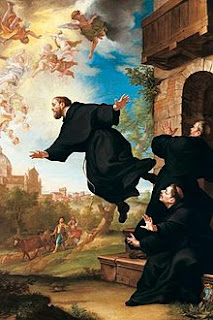Bartolomeo Ammannati – sculptor and architect
Florentine artist created masterpieces for his home city
Bartolomeo Ammannati, whose buildings in Italy marked the transition from the Renaissance to the Baroque style, was born on this day in 1511 at Settignano near Florence. Ammannati began his career as a sculptor, carving statues in a number of Italian cities during the 1530s. He trained first under Baccio Bandinelli and then under Jacopo Sansovino in Venice, working with him on the Library of St Mark, the Biblioteca Marciana, in the Piazzetta. Pope Julius III called Ammannati to Rome in 1550 on the advice of architect and art historian Giorgio Vasari. Ammannati then worked with Vasari and Giacomo da Vignola on the Villa Giulia, which belonged to the Pope. Ammannati’s masterpiece in Florence is considered to be the Pitti Palace, where he enlarged Filippo Brunelleschi’s basic structure and designed a courtyard and facade opening on to the Boboli Gardens. His other major works in Florence are the Bridge of Santa Trinità over the Arno and the Fountain of Neptune in the Piazza della Signoria. It is believed the sculptor modelled Neptune’s face on that of Cosimo I de' Medici. Read more…
_____________________________________________________________________
Fabio Capello - leading football manager
Veteran Champions League winner with five Serie A titles
Fabio Capello, one of European club football's most successful managers, was born on this day in 1946 in San Canzian d'Isonzo, close to the border of Italy and Slovenia. The winner of five Serie A titles as a coach and four as a player, plus two La Liga titles as manager of Real Madrid, and the Champions League with AC Milan, Capello was born in an area occupied by Allied forces after the end of the Second World War. He began his playing career at the Ferrara-based SPAL club and went on to represent Roma, Juventus and AC Milan. A midfielder with an eye for goal, he was a Serie A champion as a player three times with Juventus and once with Milan, also winning the Coppa Italia with Roma and Milan. He represented Italy 32 times, playing at the 1974 World Cup finals in West Germany. As a coach, he took England to the World Cup finals in South Africa in 2010. Read more…
______________________________________________________________________
Raffaella Carrà - entertainer and TV presenter
Much-loved star with long and varied career
Raffaella Carrà, the singer, dancer, television presenter and actress often simply known as la Carrà or Raffaella, was born in Bologna on this day in 1943. Carrà has become a familiar face on Italian TV screens as the host of many variety shows and, more recently, as a judge on the talent show The Voice of Italy. She has also enjoyed a recording career spanning 45 years and was a film actress for the best part of 25 years, having made her debut at the age of nine. Her best-known screen role outside Italy was alongside Frank Sinatra in the hit American wartime drama, Von Ryan’s Express. Carrà was born Raffaella Maria Roberta Pelloni. Shew grew up in the Adriatic resort of Bellaria-Igea Marina, just north of Rimini, where her father ran a bar and her maternal grandfather an ice cream parlour. At the age of eight, she won a place at the National Dance Academy in Rome. Read more…
Home












